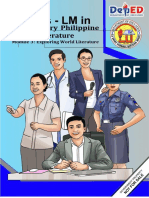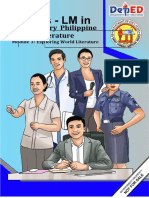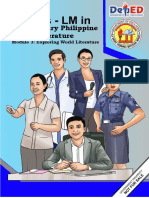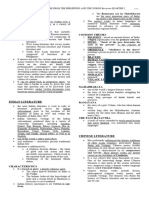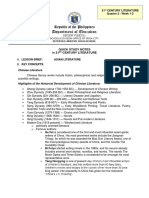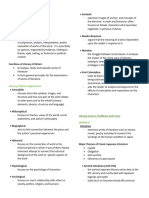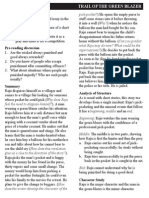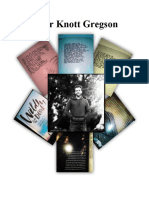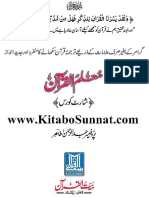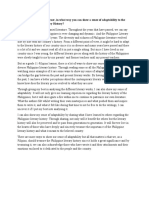0% found this document useful (0 votes)
53 views3 pagesActivity 2
The document discusses Japanese, Chinese, and Indian literature, highlighting their characteristics, major works, and influential authors. Japanese literature is noted for its diversity and cultural reflection, while Chinese literature is recognized for its vastness and historical significance. Indian literature is characterized by its use of various vernacular languages and includes significant works like the Mahabharata and Ramayana.
Uploaded by
alleah toledoCopyright
© © All Rights Reserved
We take content rights seriously. If you suspect this is your content, claim it here.
Available Formats
Download as DOCX, PDF, TXT or read online on Scribd
0% found this document useful (0 votes)
53 views3 pagesActivity 2
The document discusses Japanese, Chinese, and Indian literature, highlighting their characteristics, major works, and influential authors. Japanese literature is noted for its diversity and cultural reflection, while Chinese literature is recognized for its vastness and historical significance. Indian literature is characterized by its use of various vernacular languages and includes significant works like the Mahabharata and Ramayana.
Uploaded by
alleah toledoCopyright
© © All Rights Reserved
We take content rights seriously. If you suspect this is your content, claim it here.
Available Formats
Download as DOCX, PDF, TXT or read online on Scribd
/ 3






